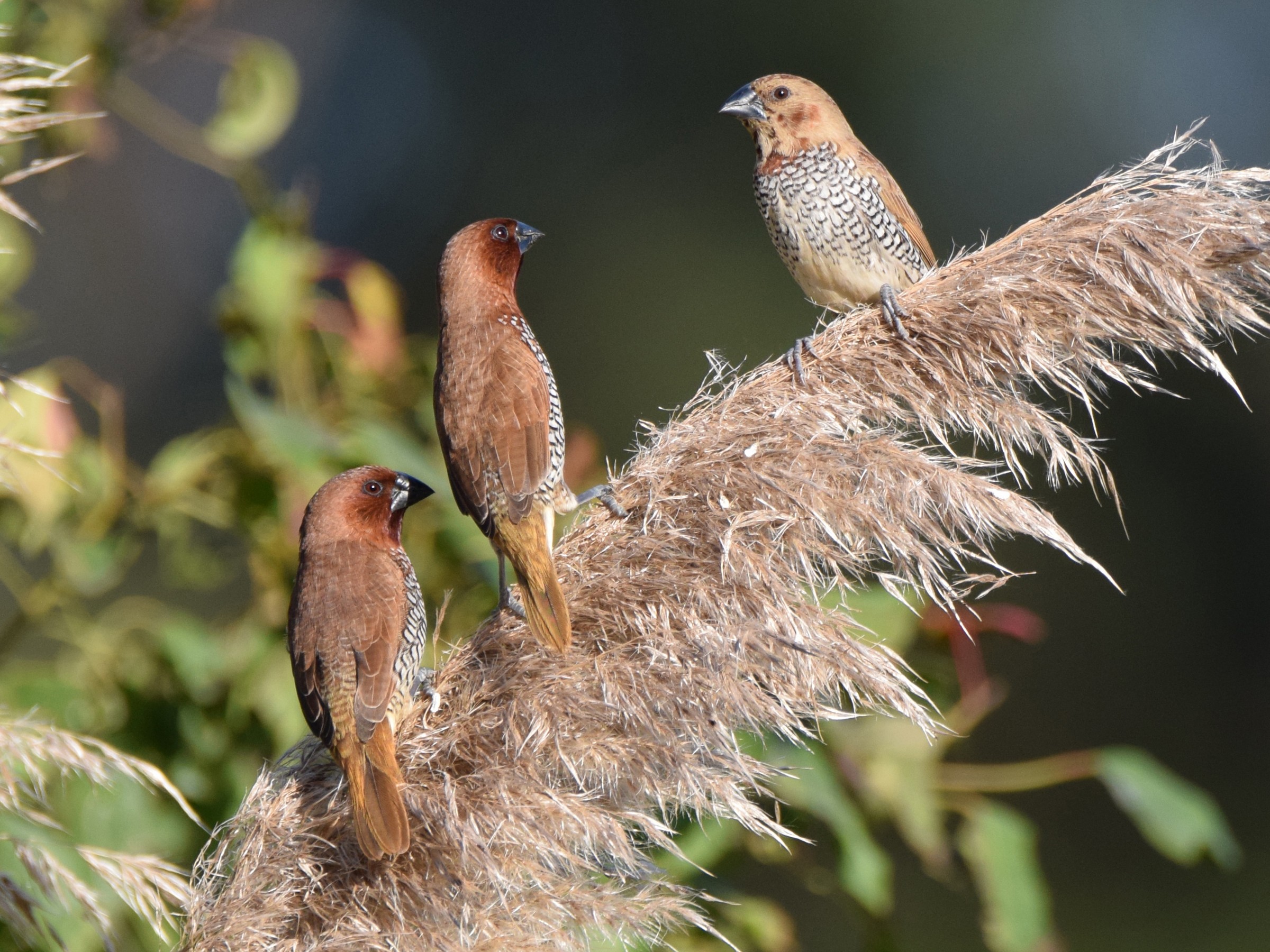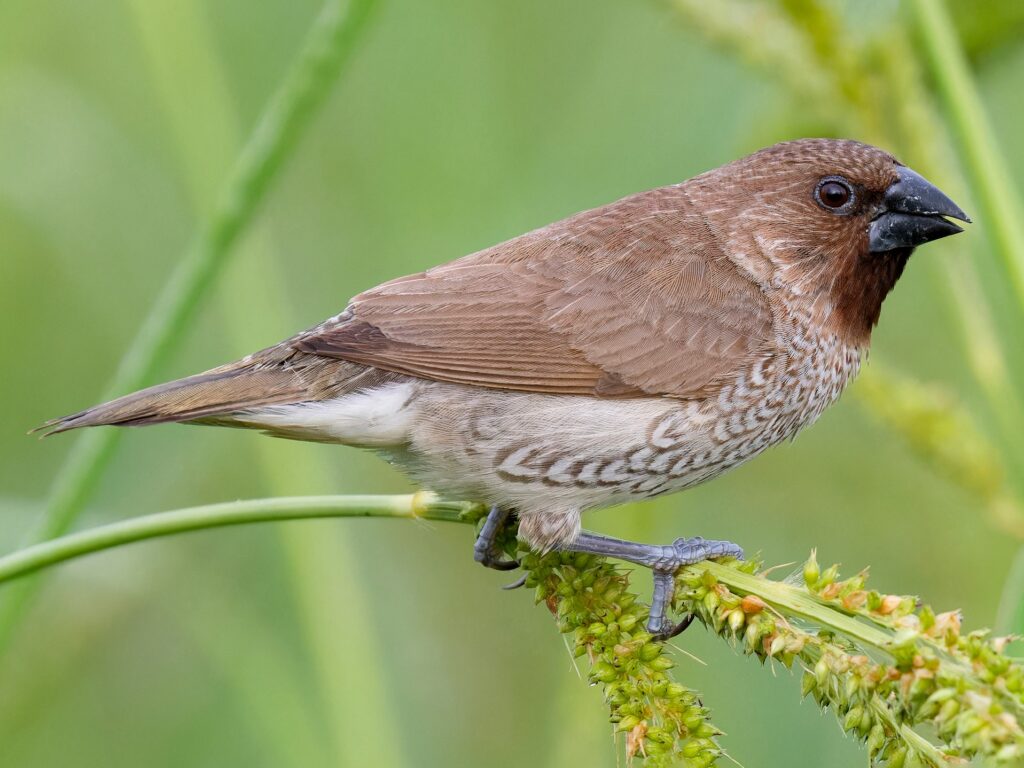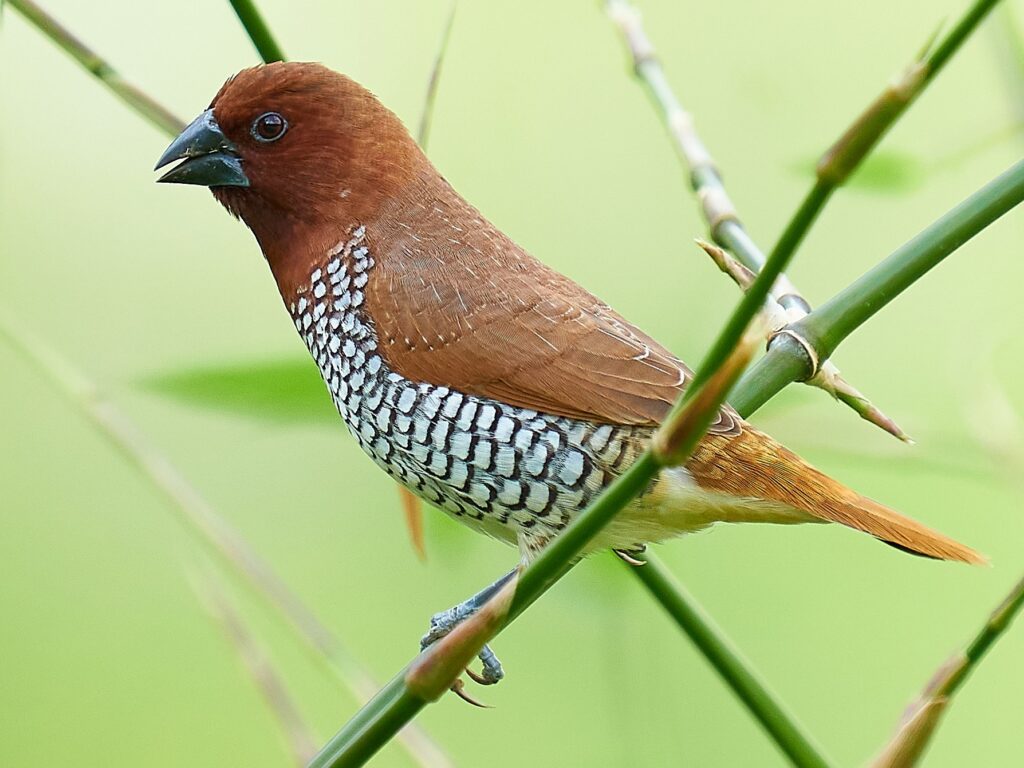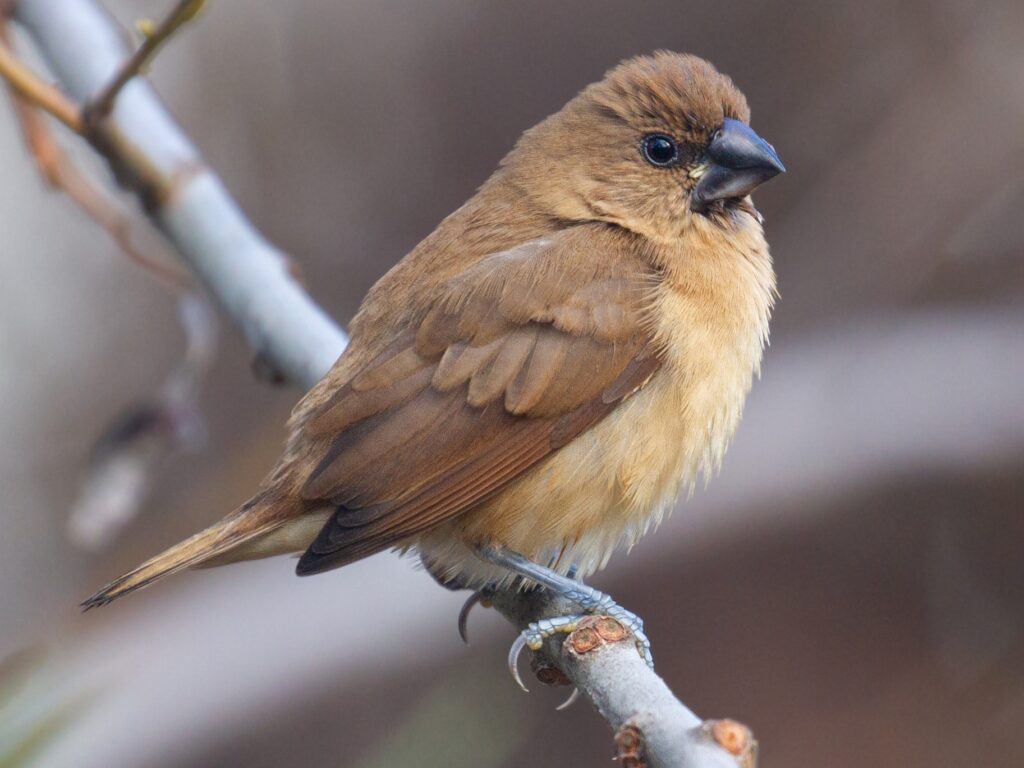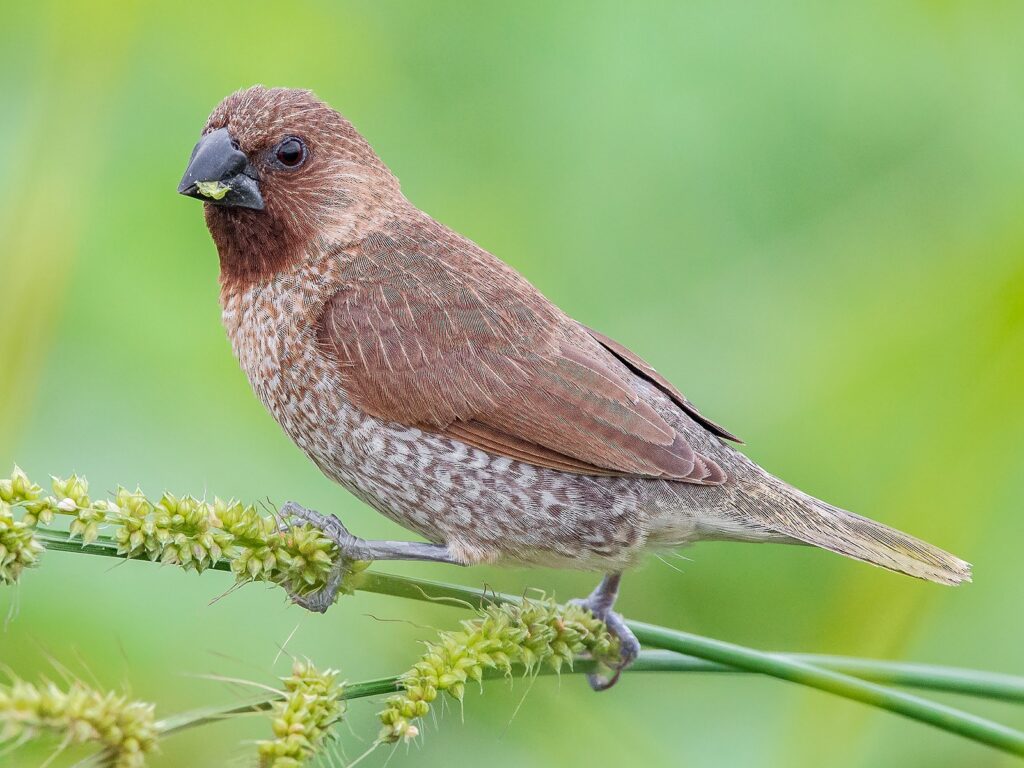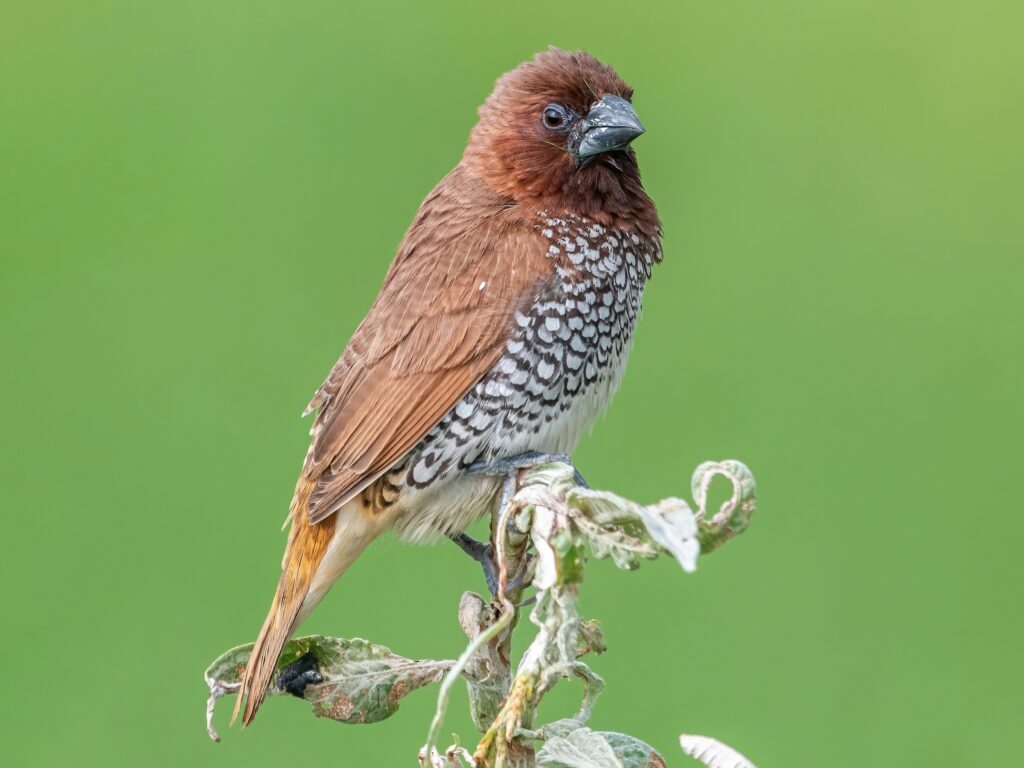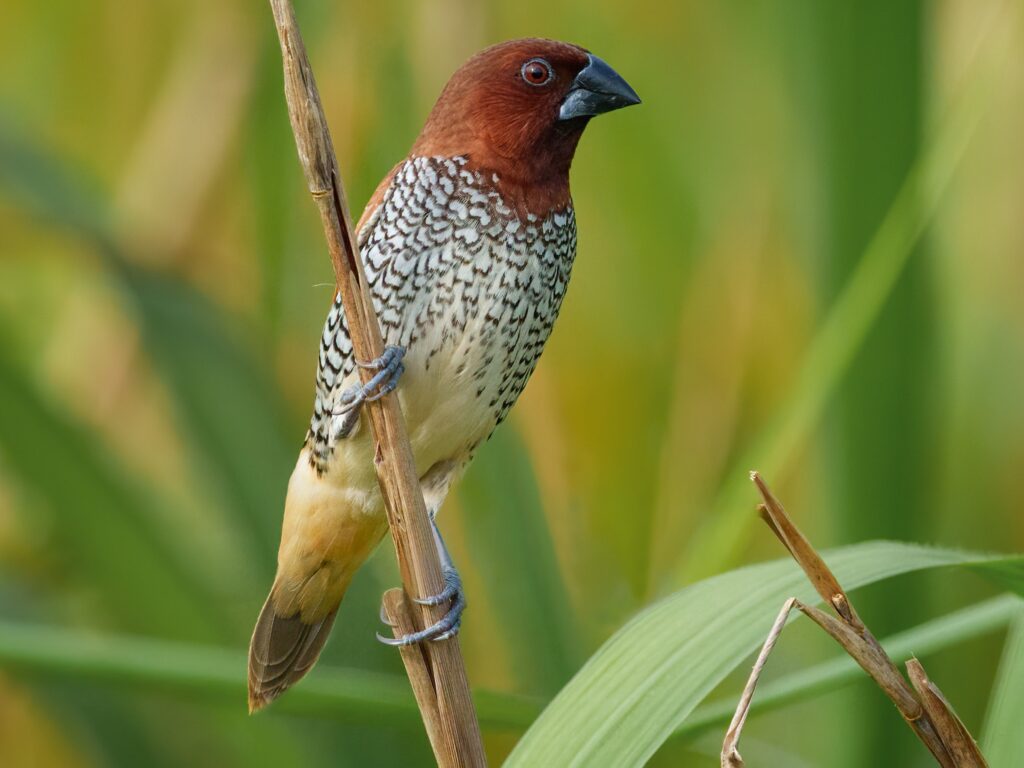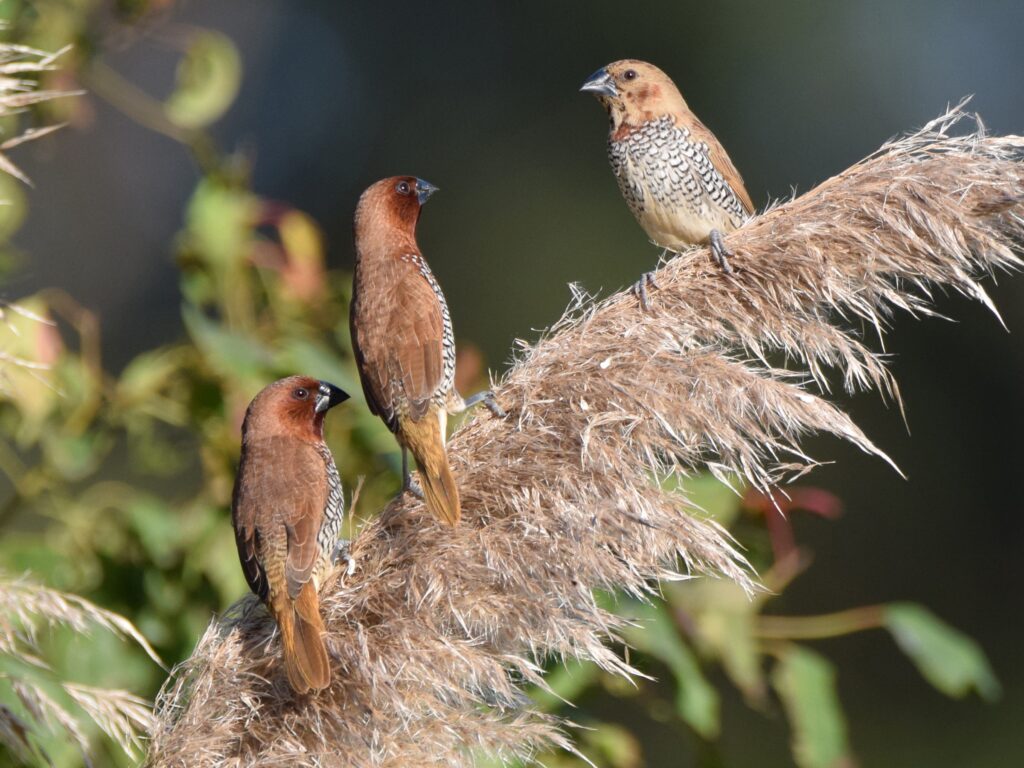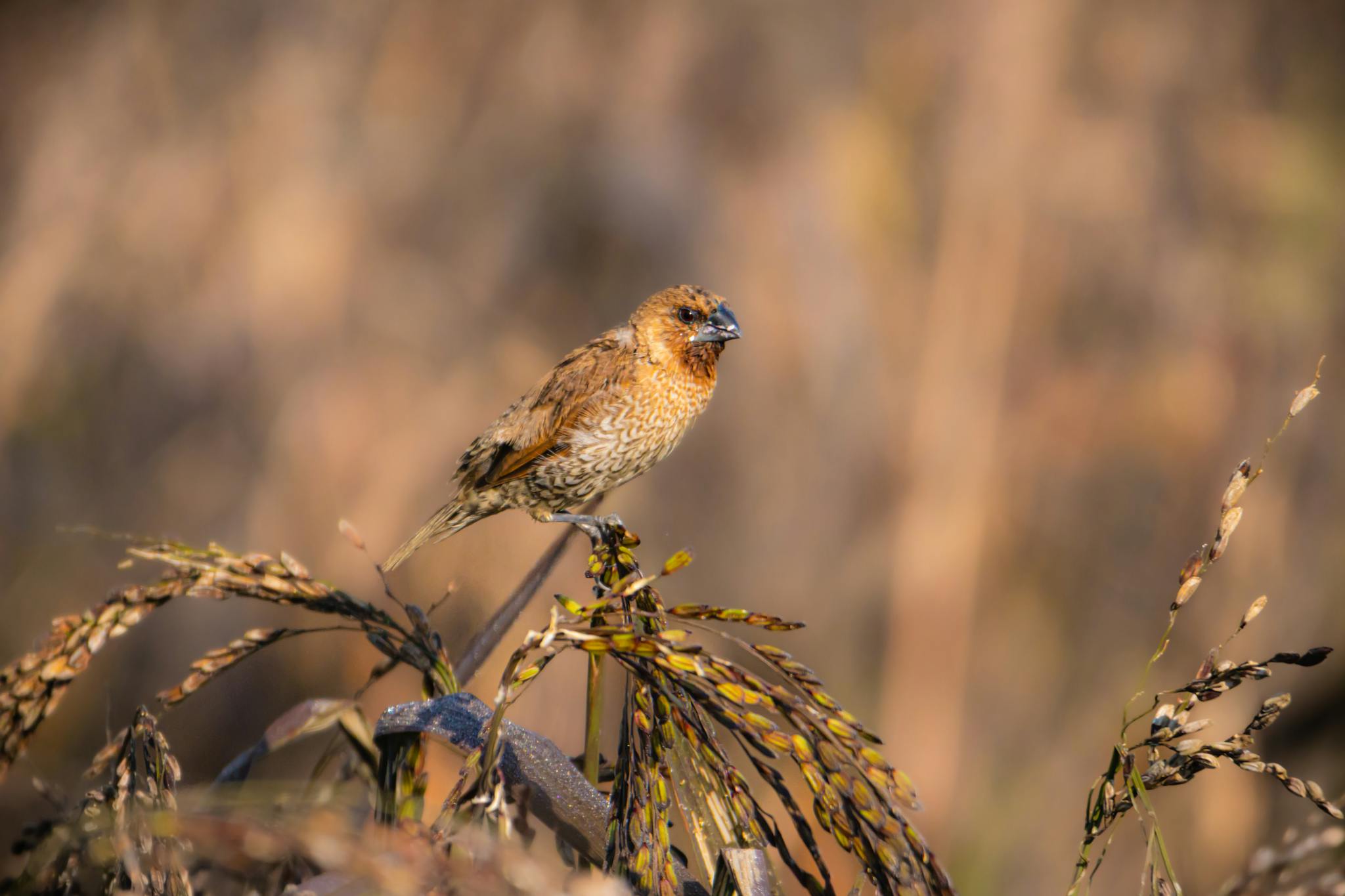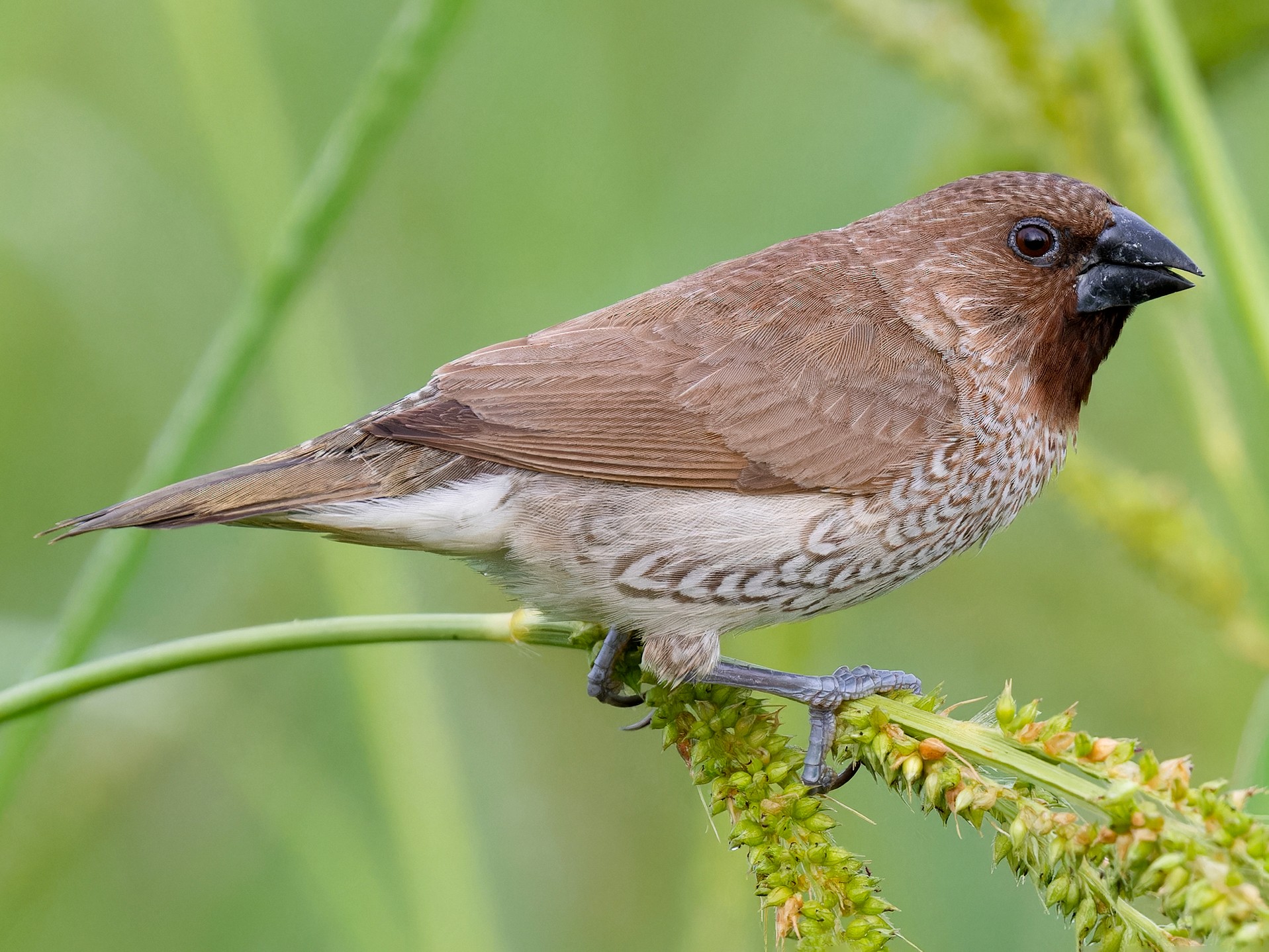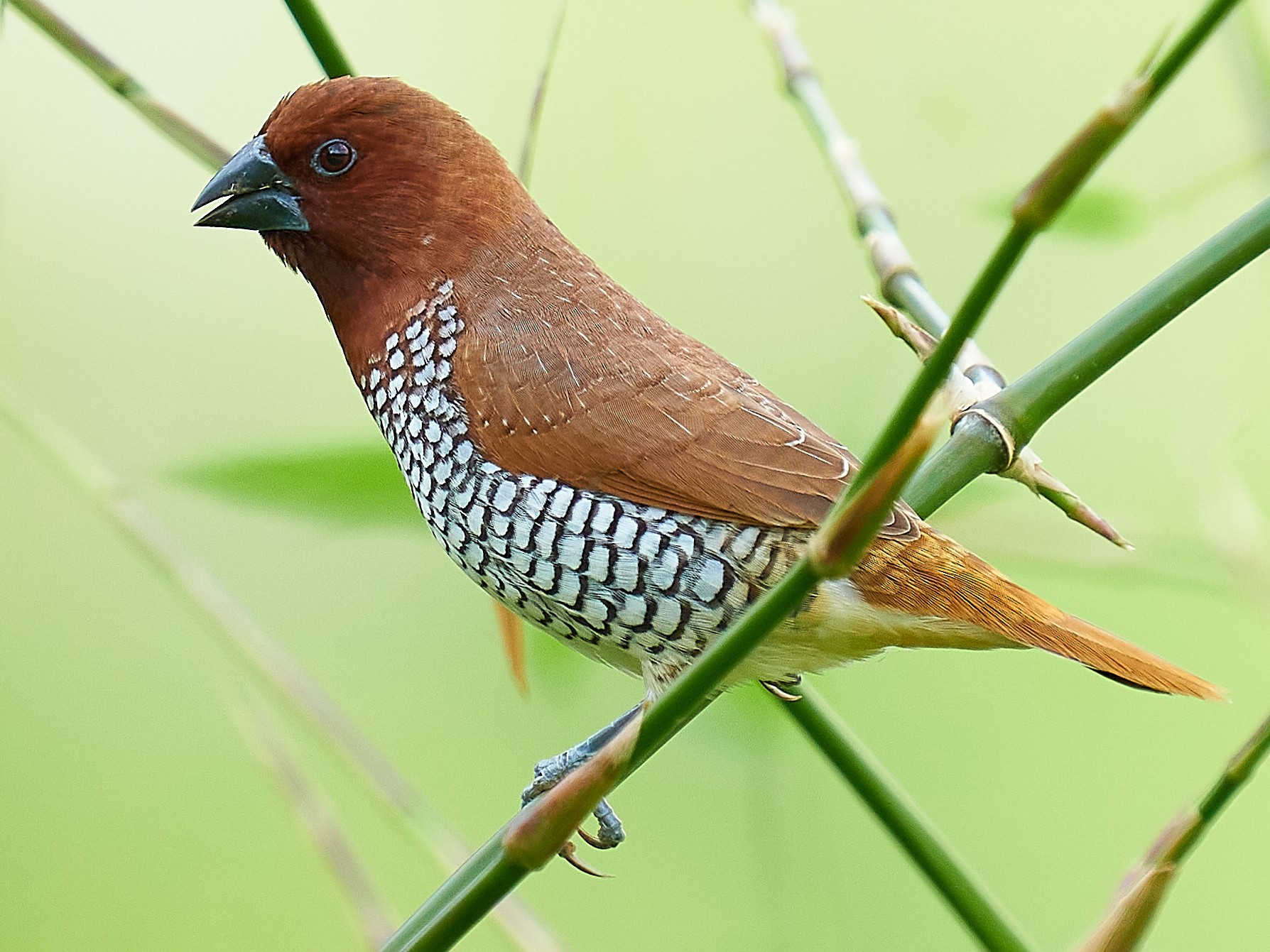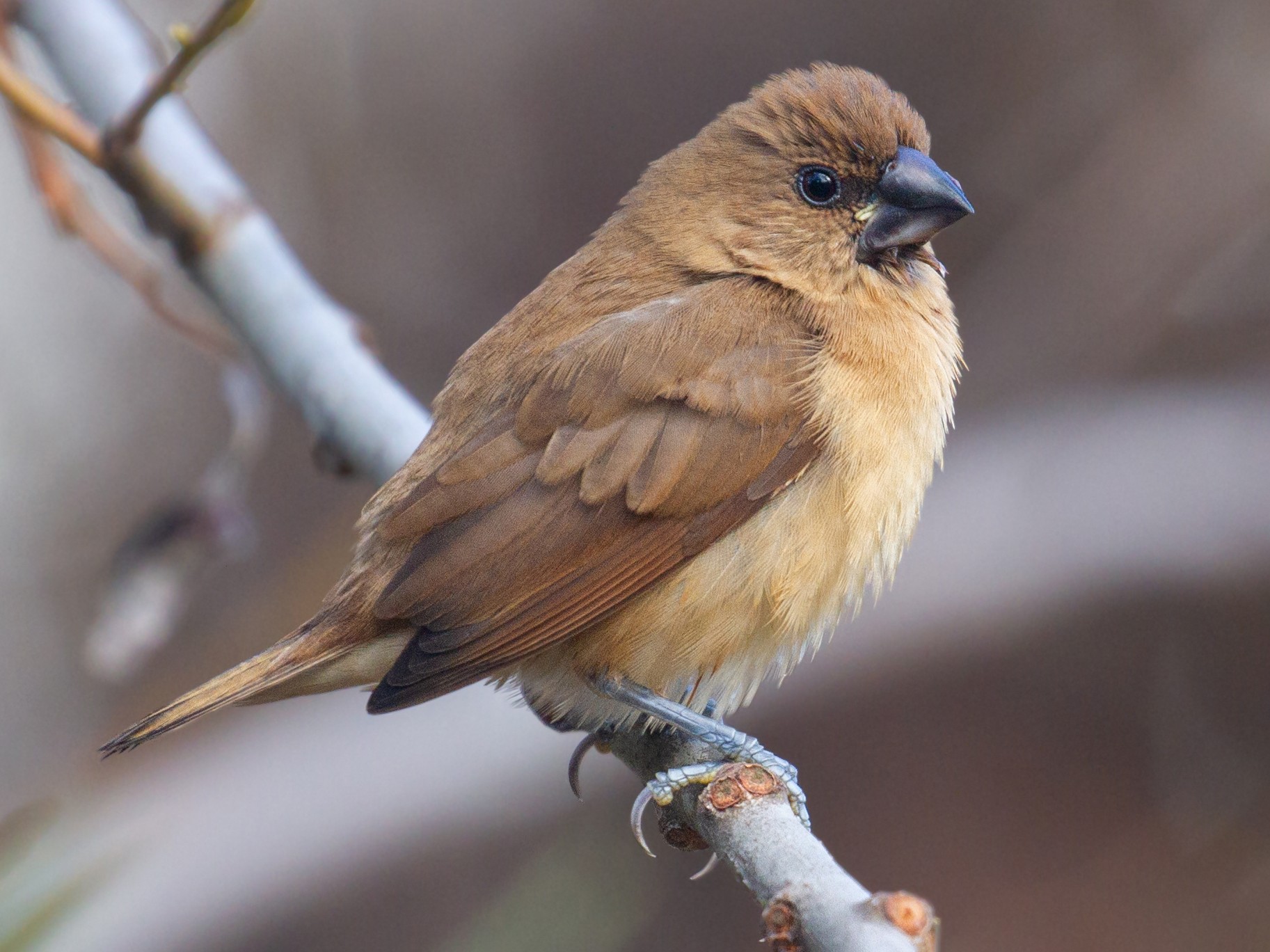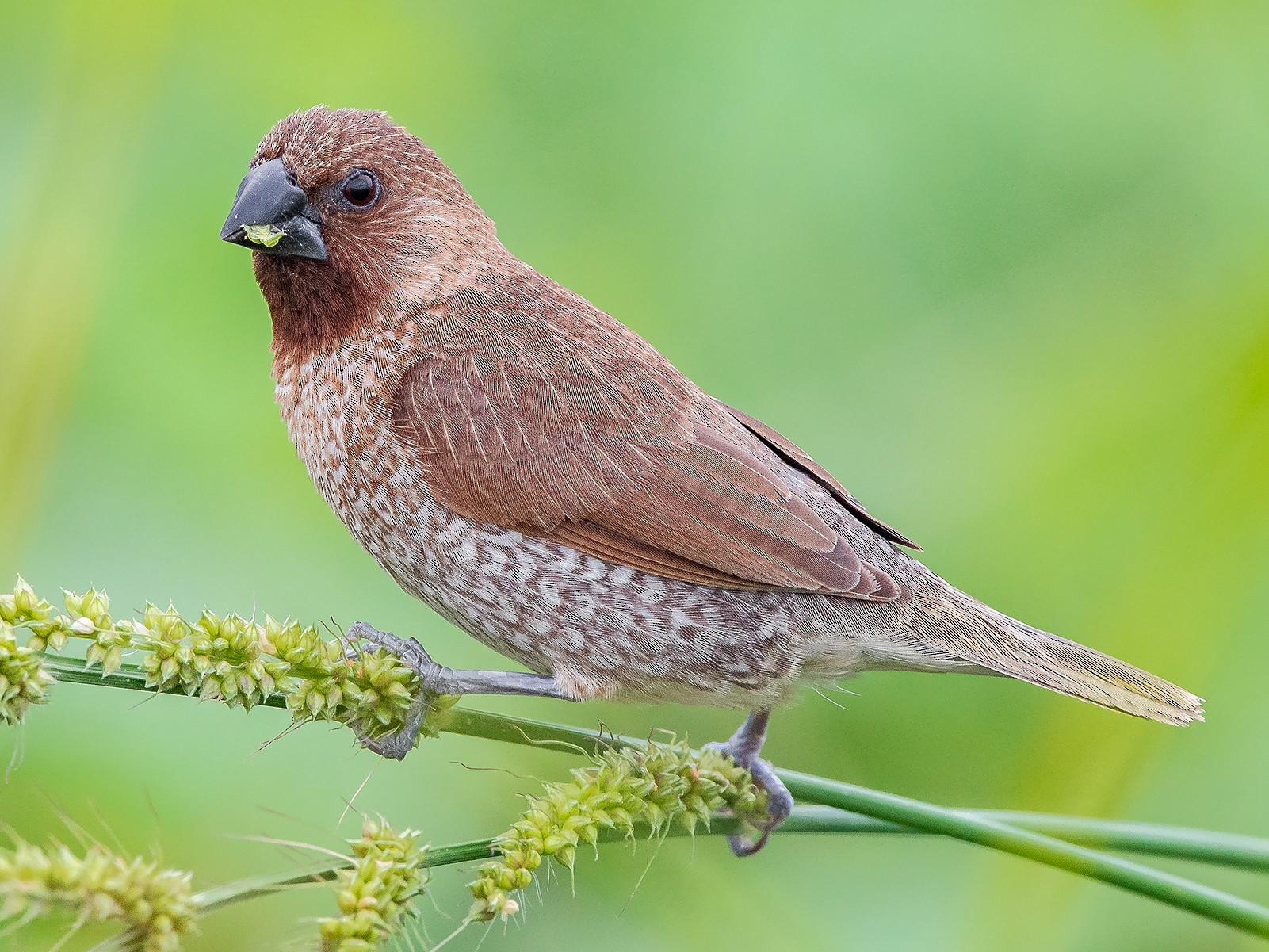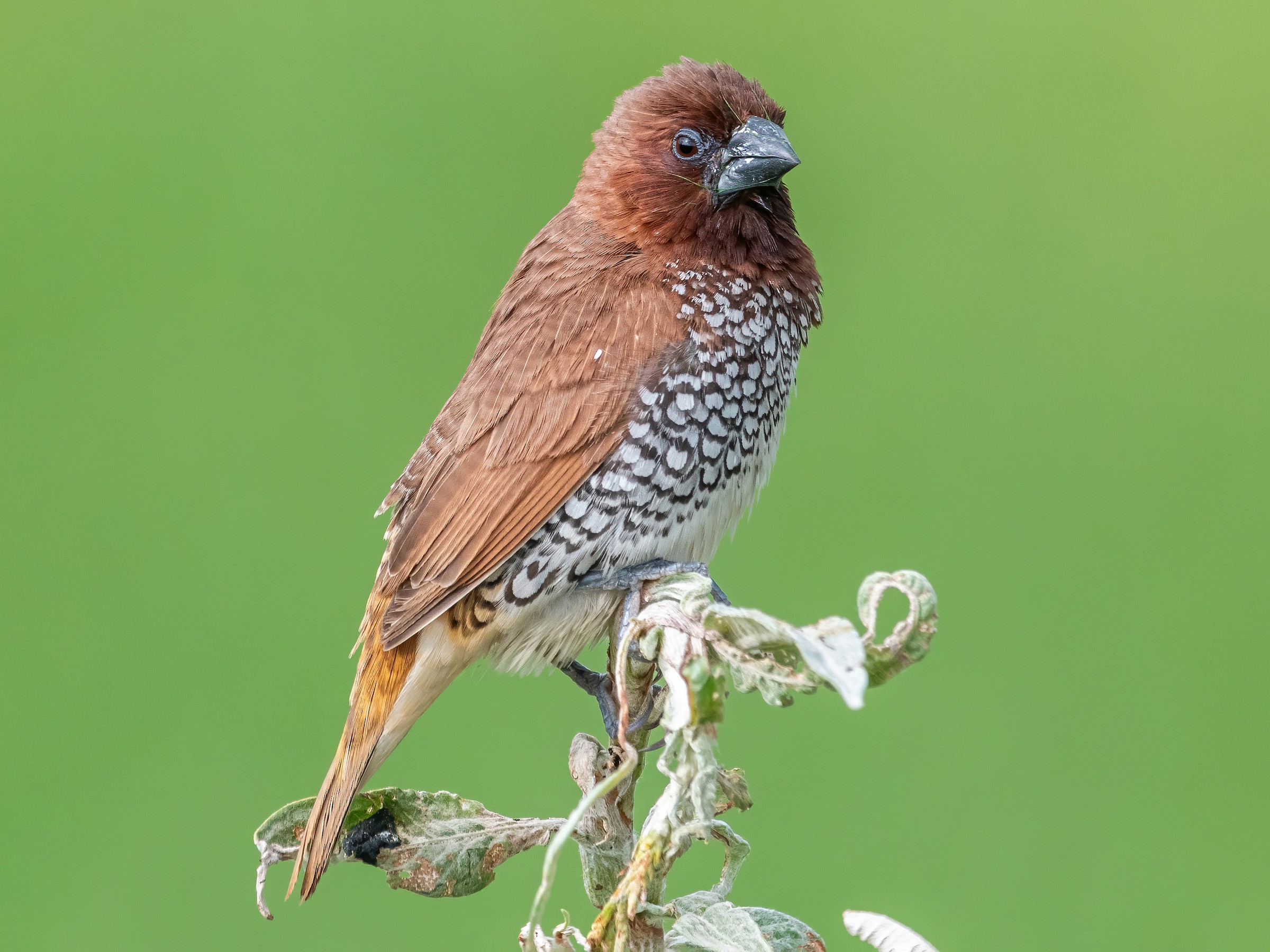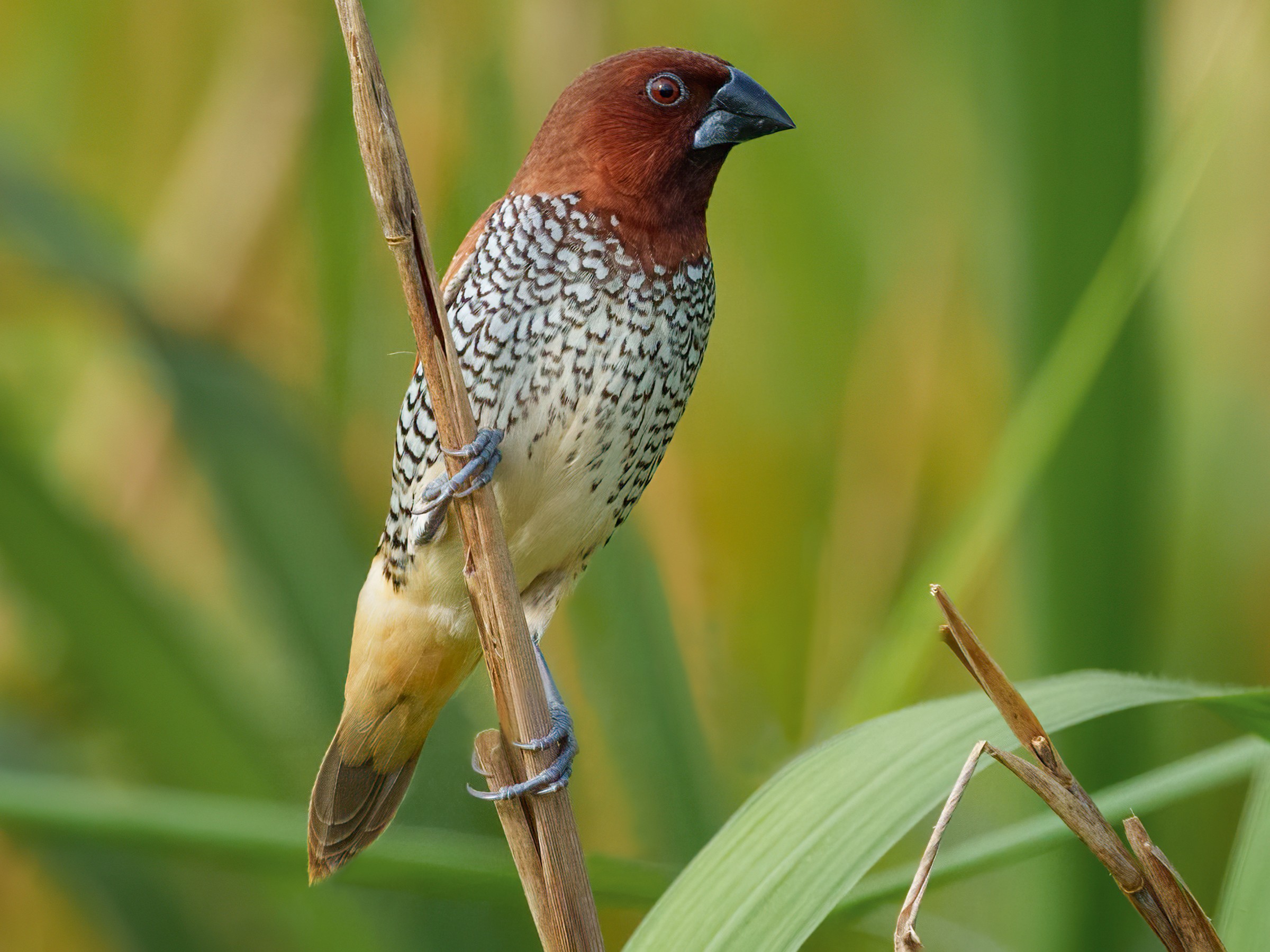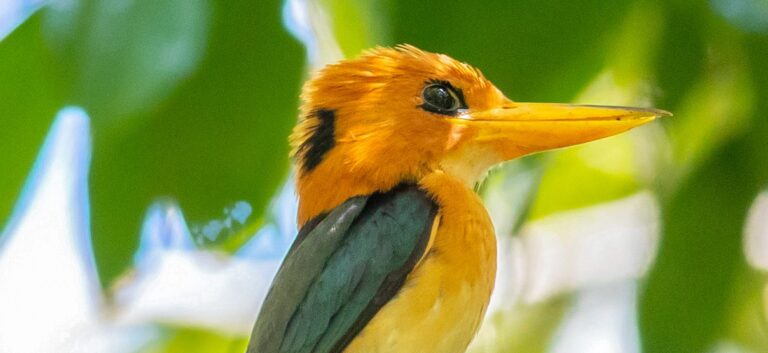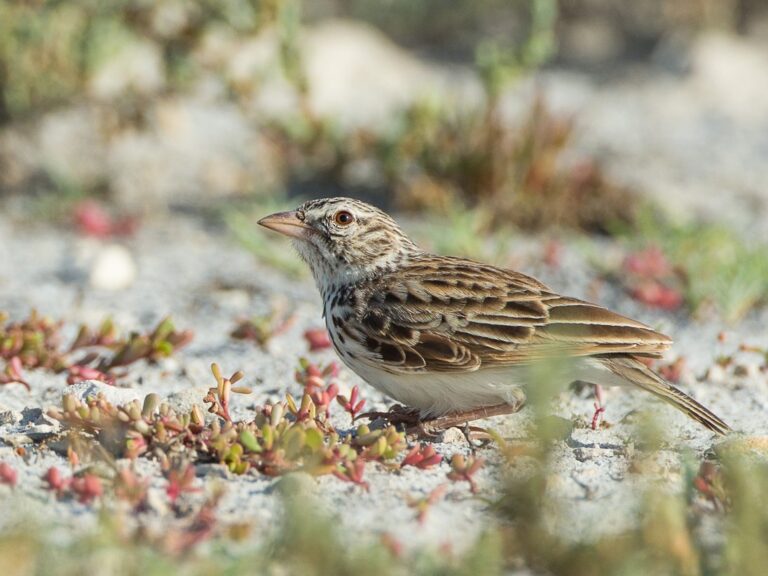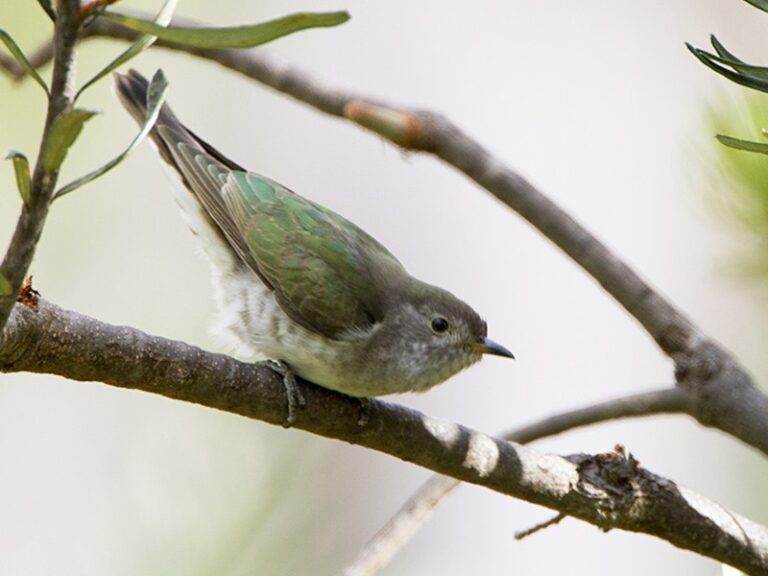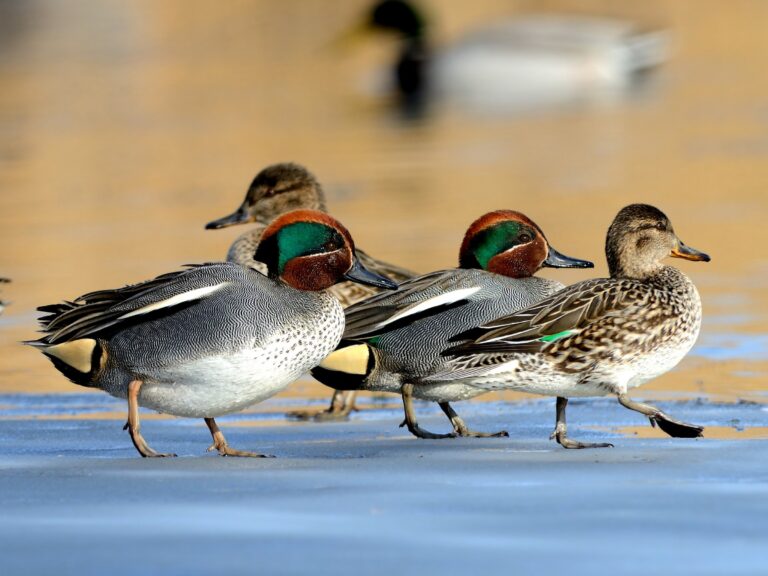Scaly-breasted Munia: The Charming Avian Jewel of South Asia
The Scaly-breasted Munia, also known as Lonchura punctulata or the Spice Finch, is a small but fascinating bird. This species is recognized for its unique vocalizations, which include a variety of melodious calls that resonate in their habitats. Commonly found in open grasslands, rice fields, and urban areas, they have adapted well to human environments, making them a familiar presence in many regions.
With a rich brown plumage adorned with distinctive scaling on the breast, these birds are easy to identify. Their social behavior adds to their charm, as they often forage in flocks and are known for their playful interactions. The Scaly-breasted Munia plays a role in seed dispersal, contributing to the ecosystem where it thrives, yet, it faces challenges due to habitat loss and urbanization.
Bird enthusiasts and researchers continue to explore the potential impacts of this adaptable species on local environments. The Scaly-breasted Munia not only captivates with its beauty and song but also serves as a reminder of the balance between nature and urban life.
Key Takeaways
- The Scaly-breasted Munia is known for its distinct vocalizations and social behavior.
- It thrives in diverse habitats, including urban areas and agricultural lands.
- Conservation efforts are important to ensure the survival of this adaptable species.
Identification and Taxonomy
The Scaly-breasted Munia, a member of the Estrildidae family, has distinct physical traits and a clear taxonomic classification. This section explores its physical characteristics and scientific naming.
Physical Characteristics
Scaly-breasted Munias are small birds, measuring about 4.5 to 5.5 inches in length. They exhibit a unique plumage of brown and cream, with striking scaly patterns on their breast and flanks. These patterns help in identification from similar species like the Nutmeg Mannikin and Spotted Munia.
Their beaks are conical and strong, perfect for cracking seeds and grains. Adult males are often more colorful than females, featuring bolder patterns. When they vocalize, these birds produce a series of cheerful, short notes, which can be quite melodic. The calls are generally a mix of chirps and whistles, especially during courtship and social interactions.
Latin Name and Synonyms
The scientific name for the Scaly-breasted Munia is Lonchura punctulata. It has several synonyms, including Padda punctulata. The bird’s classification falls within the order Passeriformes and the family Estrildidae.
Taxonomically, it is closely related to other finches, allowing easy identification among the estrildid group. In some regions, it is also referred to as the Spotted Munia or Nutmeg Mannikin due to its resemblance to these species. Understanding its Latin classification helps in recognizing its place within the larger context of avian biology.
Habitat and Distribution
The Scaly-breasted Munia is commonly found in various habitats across its native and introduced regions. Its adaptability allows it to thrive in urban areas, grasslands, and open woodland regions. This section covers where the Scaly-breasted Munia is originally from and where it has expanded due to introduction by humans.
Native Range
The native range of the Scaly-breasted Munia includes parts of Southeast Asia, particularly in countries such as India, the Philippines, and Indonesia. These birds prefer habitats such as grasslands, scrub, and agricultural areas.
They are often seen in flocks, which is vital for foraging and protection. The state of their vocalizations, a series of chirps and whistles, plays a critical role in communication within these groups.
Scaly-breasted Munias are also attracted to rice fields and other cultivated lands, where they find ample food sources. Their diet mainly consists of seeds and grains, which are abundant in these regions.
Introduced Regions
In addition to their native habitats, Scaly-breasted Munias have established populations in several introduced regions, particularly in North America. They are mainly found in states like Florida, Texas, California, Alabama, and Mississippi.
In Southern California and Texas, they often inhabit urban areas, parks, and gardens. These birds have adapted well to local environments, often foraging in green spaces where food is plentiful.
Their adaptable nature has allowed wild populations to thrive, forming stable communities in these new areas. The diversity of habitats—from again urban parks to roadside vegetation—supports their varied diet and social structures.
The success of their introduction highlights the resilience of the species, as well as its ability to coexist with other local birds.
Behavior and Ecology
Scaly-breasted Munias exhibit a range of fascinating behaviors and ecological adaptations. Their feeding habits, social structures, and reproductive patterns highlight their interactions with the environment and each other.
Feeding Habits
Scaly-breasted Munias are primarily granivorous, feeding mainly on seeds. They show a preference for grass seeds, especially in agricultural areas like rice fields. This feeding behavior helps control the growth of certain grasses while benefiting farmers by reducing crop pests.
These birds are known for their opportunistic feeding habits. They will forage on the ground as well as in trees, taking advantage of available resources. Their calls can be heard as they search for food, making soft chirping sounds.
The presence of Scaly-breasted Munias in areas such as Houston, Texas, marks an interesting case of adaptation. They have adjusted their diets to include seeds from introduced plants, aiding their survival in diverse environments.
Social Structure
Scaly-breasted Munias are highly social birds that often form large flocks. They exhibit strong gregarious behavior, which is crucial for finding food and avoiding predators. Flocks can be seen foraging in fields or resting together in trees.
Within these flocks, they establish clear social hierarchies and engage in vocal communications. Their melodic songs serve to reinforce group cohesion and attract mates. Most vocalizations are soft and pleasant, enabling them to communicate effectively in dense vegetation.
With their strong social bonds, these birds often participate in cooperative behaviors, such as maintaining safety in numbers. This social structure enhances their chances of survival in both wild populations and introduced areas.
Reproductive Patterns
Nesting behavior in Scaly-breasted Munias shows adaptability and resourcefulness. They prefer to nest in dense vegetation or tall grasses, which provides cover against predators. Nests are typically made from grass and twigs, forming a compact structure.
The breeding season involves complex courtship displays accompanied by melodious calls. Males engage in song duels to attract females, showcasing their fitness and genetic quality. After mating, females lay around 3 to 8 eggs, which they incubate for about 12 to 14 days.
Once the chicks hatch, both parents take turns feeding them. This biparental care increases the chances of survival for the young. Active monitoring on platforms like Ebird aids in understanding their nesting success across different regions.
Conservation Status
The conservation status of the Scaly-breasted Munia reflects its adaptability and presence in various environments. This bird species has seen different trends in population levels, particularly due to its status as an introduced species in various regions.
Population Trends
Scaly-breasted Munias are currently classified as Least Concern by the IUCN. This classification indicates that they are not facing any immediate threat of extinction. Their populations have adapted well in areas like northwest Florida and Texas, where they have established self-sustaining communities.
Introduced populations in the United States have flourished since their arrival in the mid-20th century. Regular observations show robust numbers in urban settings. In some areas, their population growth has outpaced that of native birds, leading to competition for food and space.
Environmental Impact
As an introduced species, the Scaly-breasted Munia can impact local ecosystems. Their diet mainly consists of seeds, which can lead to competition with native species for resources. This competition affects not just other birds, but also plants that rely on the same seeds for growth.
Their presence can alter the balance of local avian communities. In places like Texas, their vocalizations are common, contributing to the sounds of urban birdlife. These vocalizations are joyful and can attract attention, sometimes overshadowing sounds from native species. This dynamic highlights the importance of monitoring their environmental effects while appreciating their role in new habitats.
Interaction With Humans
The Scaly-breasted Munia has varying interactions with humans, particularly in captivity and during birdwatching. Understanding their relationship with people reveals how they adapt and thrive in different environments.
In Captivity
Scaly-breasted Munias are popular in the pet trade due to their charming nature and vibrant appearance. They are often kept as cage birds, making them accessible to many bird enthusiasts. These birds are known for their calming vocalizations, which can be pleasant and melodic.
When kept in captivity, they require a spacious cage, a diet rich in seeds, and opportunities for social interaction. Owners should provide nesting materials if breeding is desired, as these birds are known to be productive breeders.
Proper care includes maintaining clean living conditions and ensuring they have the right companions. Juveniles can be particularly vocal and may mimic sounds from their environment.
Observation and Birdwatching
In Southern California, the Scaly-breasted Munia is frequently observed in urban areas, especially along roadsides and parks. Their adaptability allows them to thrive in human-altered landscapes, attracting many birdwatchers. Websites like eBird provide valuable data on their sightings, helping birders track their populations.
Birdwatchers appreciate the Scaly-breasted Munia’s distinctive calls and social behaviors. They can often be seen foraging in groups, making them an exciting sight for enthusiasts. Their presence contributes to biodiversity, enhancing the birdwatching experience in California and beyond.
Frequently Asked Questions
This section covers common questions about the Scaly-breasted Munia, including how to tell males from females, their nesting habits, habitat range, diet, interesting facts, and ways to attract them to gardens.
How to distinguish between male and female Scaly-breasted Munias?
Male and female Scaly-breasted Munias have similar physical characteristics, making them hard to tell apart. Males tend to be slightly larger and have more vibrant coloration, especially on their heads. Both genders have a distinctive pattern of speckled brown and white on their feathers.
What are the nesting habits of the Scaly-breasted Munia?
Scaly-breasted Munias are known for their communal nesting behavior. They often build nests in dense grass or shrubs. The nests are made from grass and leaves and shaped like a dome. A typical clutch contains 4 to 6 eggs, which the female incubates for about two weeks.
What is the typical range and habitat of the Scaly-breasted Munia?
Scaly-breasted Munias are commonly found in tropical and subtropical regions. They prefer open grasslands, fields, and urban areas where they can find weed seeds. Their habitat often includes gardens, agricultural fields, and areas with dense vegetation.
What diet does the Scaly-breasted Munia typically have?
The Scaly-breasted Munia primarily feeds on seeds, particularly grasses and weeds. They also consume small fruits and insects during certain seasons. Their diet contributes to seed dispersal, benefiting the surrounding ecosystem.
What are some interesting facts about the Scaly-breasted Munia?
Scaly-breasted Munias are known for their charming vocalizations. They produce a series of soft, melodious chirps and whistles, which can be delightful to hear. These birds are also social, often seen in flocks, which helps them stay safe from predators.
What measures can be taken to attract Scaly-breasted Munias to gardens?
To attract Scaly-breasted Munias, gardeners can plant a variety of grasses and native plants that produce seeds. Providing a water source can also be beneficial. Bird feeders stocked with seeds can encourage these birds to visit, especially if placed in a quiet area away from heavy foot traffic.
